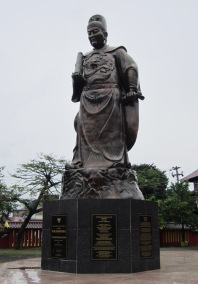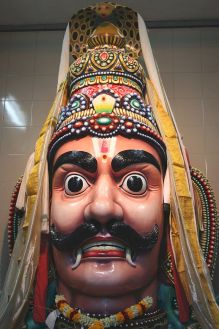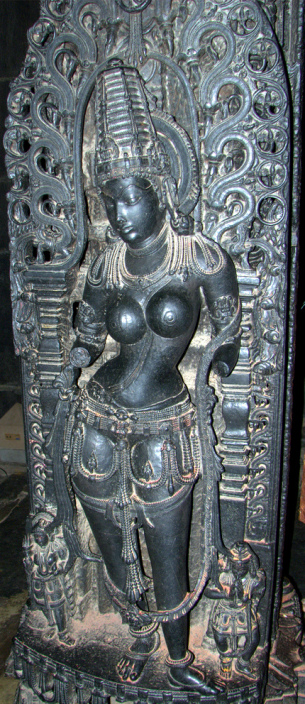Between 1298 CE and 1306 CE, the fearsome and bloodthirsty Mongols of Central Asia attacked India on six different occasions. They were determined to add the subcontinent to their empire. Each time, they were pushed back by Alauddin Khilji, emperor of the Delhi Sultanate. He was helped by his most trusted general, Malik Kafur. Kafur’s name evokes a very specific picture in most minds: a ruthless, cruel, ambitious man. Basically, all the characteristics of a macho, powerful general. But did you know that Malik Kafur was a eunuch?

A eunuch is a castrated man. Today there are a wide variety of terms for people who do not identify with the more traditional, binary divisions of gender. One umbrella term is queer, which can be used by people who identify as transgender, bi, lesbian, gay and intersex. It would seem that there is a wider acceptance of queer-ness today than at any other point in history. But that is not necessarily the case. In India, a hundred years ago, transgenders, in particular, had terrible lives. The British branded them criminals under the controversial Criminal Tribes Act 1871. They were forced to register in local police stations, run out of their homes and given little opportunity to find employment.
But, if you were to go back further in time, the story changes. The very word ‘eunuch’ is Greek, and it translates to “guardian of the bed”. A eunuch was a man who had been castrated, usually as a condition of employment, and sometimes as a form of punishment. Early Islamic society believed that eunuchs, who supposedly had no sexual desires, were ideal for certain sacred rituals. Till 2015, eunuchs were the guards of the Prophet Muhammad’s burial chamber in Medina. The Delhi Sultanate and Mughal dynasties employed eunuchs in a variety of roles. They were primary guardians of the royal harems, but it was not uncommon for eunuchs to rise to positions of power and privilege. Itimad Khan, a eunuch in the Mughal emperor Akbar’s court, handled the entire state’s finances.
Employing eunuchs was not a practice limited to Islamic society. Eunuchs were also a part of the Vijayanagara empire in South India, where they guarded harems and attended court. One of the most powerful eunuchs in the world was the Chinese general, explorer and navigator Zheng He, a favourite of the Ming emperor, and commander of 3,500 ships. You can find numerous examples of powerful eunuchs in mythology as well. In the Hindu epic, Mahabharata, Bhishma the mighty commander of the enemy Kaurava army was killed by Shikhandi, a eunuch.

Another story in the Mahabharata talks of a young man called Aravaan, who bravely offers to sacrifice himself to ensure that the Pandavas- the good guys- win. Moved by his courage, the god Krishna grants Aravaan a boon. All Aravaan wants is to die a married man. A simple enough boon you might think? Well, no woman wanted to marry a ‘dead’ man. Luckily Krishna had a plan. He took the form of a woman, Mohini, and married Aravaan. When her husband died, Mohini mourned his death as any wife would. Every year, in Villupuram, in Tamil Nadu, members of the transgender community celebrate this story during the Koovagam Koothandavar festival. They symbolically become Mohini and mourn the death of their husband, Aravaan.
Today, eunuchs and transgenders are clubbed together under the common term ‘third gender’ or ‘hijras’. They are most commonly associated with weddings and birthdays, where they arrive to bless married couples and children. Why? One answer lies in the Ramayana. It seems that when King Rama was banished from his capital Ayodhya, the entire kingdom followed him to the forest in distress. Rama ordered all the “men and women ” to turn back and go about their daily lives. When he returned from exile 14 years later, he found that people of the hijra community were still waiting at the jungle’s edge. You see, Rama had only asked the men and women to leave, so the hijras hadn’t moved an inch. Deeply moved by their loyalty, Rama gave them a boon: they could join any auspicious celebration, and people would always reward them.

Modern India has seen some progress in how society looks at people who do not fit the norm, but our history and mythology tell us that ancient India might have been surprisingly more ‘modern’ in their approach.
Archives
- January 2022
- December 2021
- November 2021
- August 2021
- March 2021
- February 2021
- January 2021
- December 2020
- November 2020
- October 2020
- September 2020
- August 2020
- April 2020
- March 2020
- February 2020
- January 2020
- November 2019
- October 2019
- September 2019
- August 2019
- July 2019
- June 2019
- August 2017
- February 2017
- January 2017
- October 2013
Featured Posts
- Tales that pots tell: Keeladi excavations AUGUST 18, 2021
- The Last Grand Nawab: Wallajah FEBRUARY 10, 2021
- How Tej Singh became Raja Desingu of Gingee FEBRUARY 5, 2021
- How Shahjahan seized the Mughal throne JANUARY 28, 2021
- Alai Darwaza – Qutub Minar Complex, Delhi NOVEMBER 21, 2020
- Marking History through British buildings NOVEMBER 17, 2020
- The last great queen of Travancore NOVEMBER 7, 2020
- Brahmi and the evolution of scripts OCTOBER 15, 2020
- The Cambodian King of Kanchipuram OCTOBER 14, 2020
- James Prinsep – the man who read the writing on the wall OCTOBER 10, 2020
- Mariamman – the Village Goddess who travelled SEPTEMBER 30, 2020
- Misnamed Monuments of Mamallapuram SEPTEMBER 28, 2020








